On average solar lights can fully charge themselves within 4 – 6 hours by direct sunlight to their maximum capacity.

here is a table showing charging time for different solar light types.
| Type of Solar Light | Average Charging Time |
|---|---|
| Solar garden lights | 6-8 hours |
| Solar flood lights | 8-10 hours |
| Solar string lights | 6-8 hours |
| Solar street lights | 10-12 hours |
| Solar motion sensor lights | 6-8 hours |
| Solar deck lights | 6-8 hours |
By the way, I have done several tests with three different solar lights to make sure the time is taken to charge them.
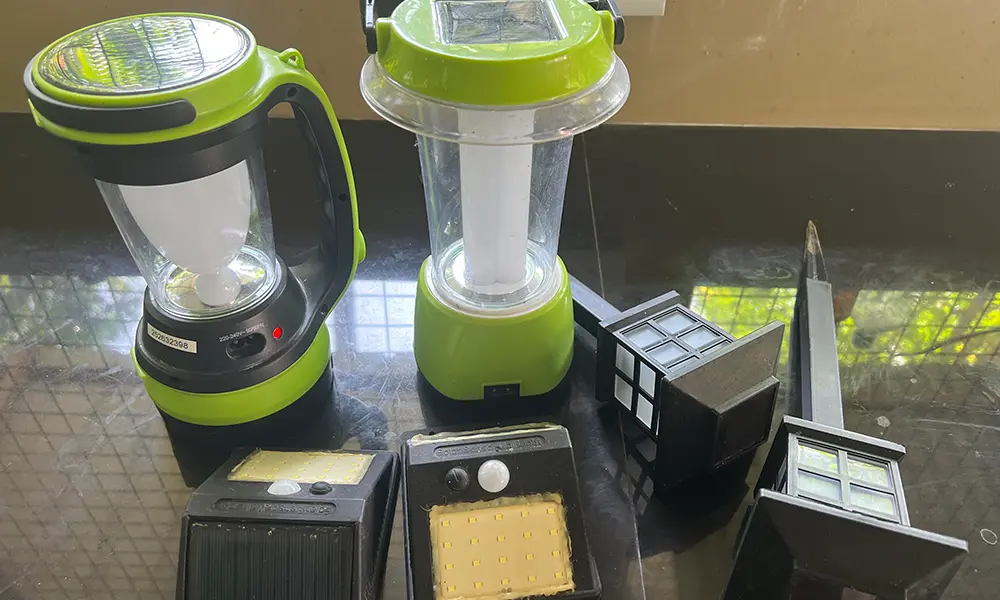
The above photograph has my new and old solar lights. I have discharged all of them and collected them to test the time taken to charge them.
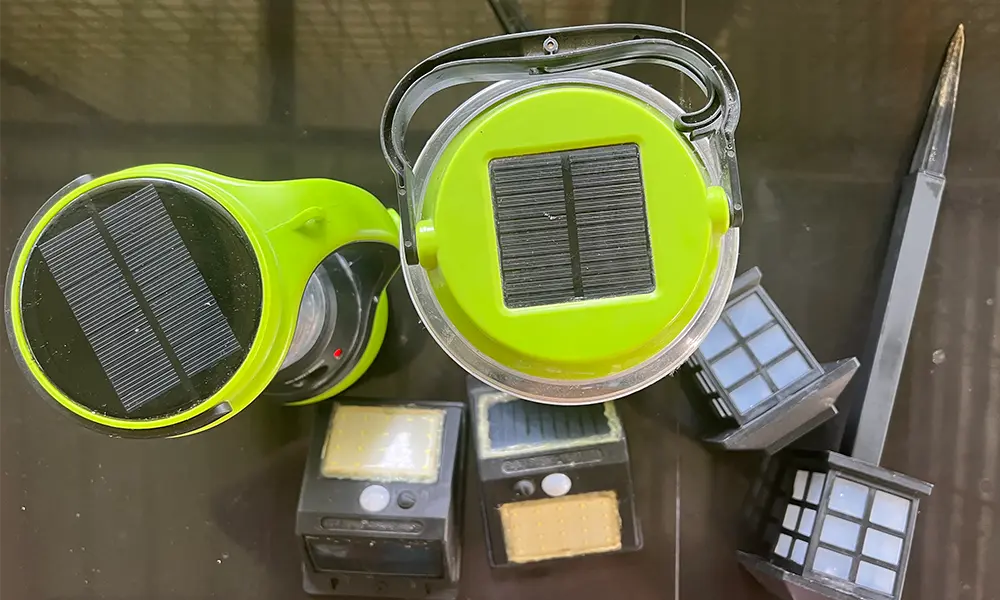
This is the top view of all the solar lights and their respective solar panels.
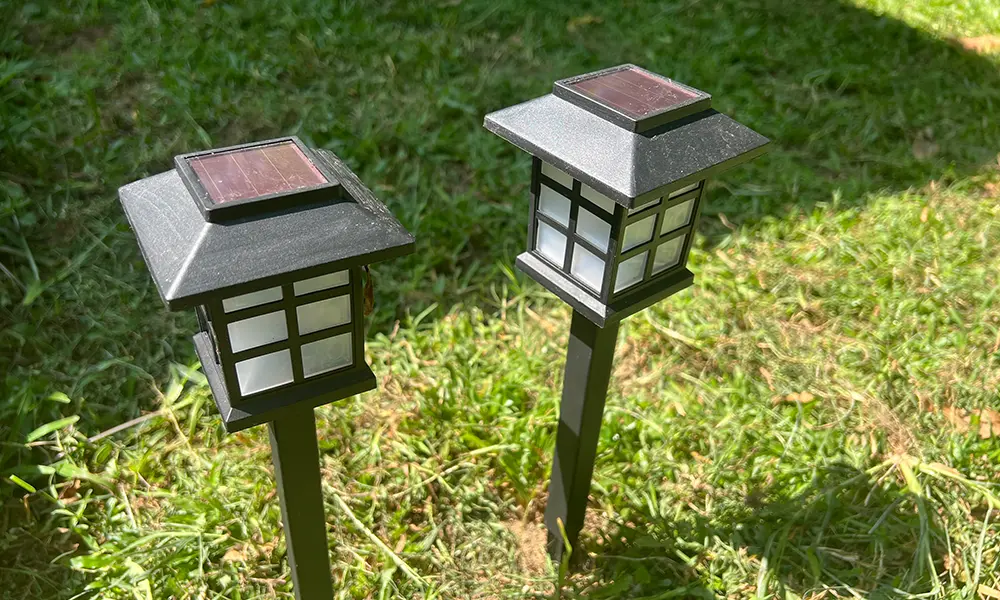
These two solar garden lights are new ones. So I added them under direct sunlight and started measuring the time to fully charge them.
It took only 4 hours to fully charge them.
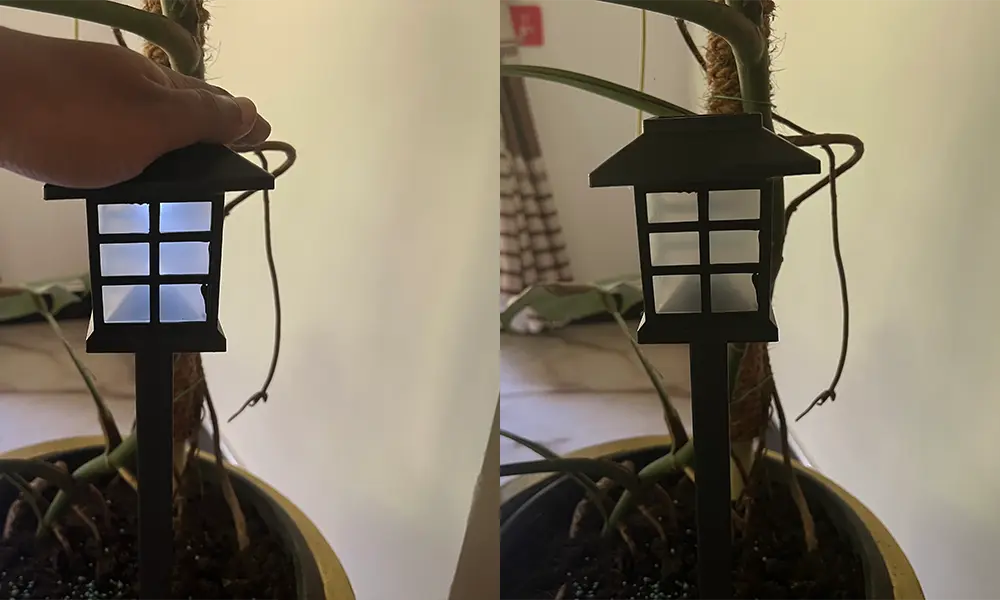
The above photograph shows how the LED in the garden light goes on when I artificially simulate the nighttime.
These garden lamps are pretty cheap. so their light intensity is kinda low.
The above video shows the new garden solar lights are in action after charging for 4 hours.
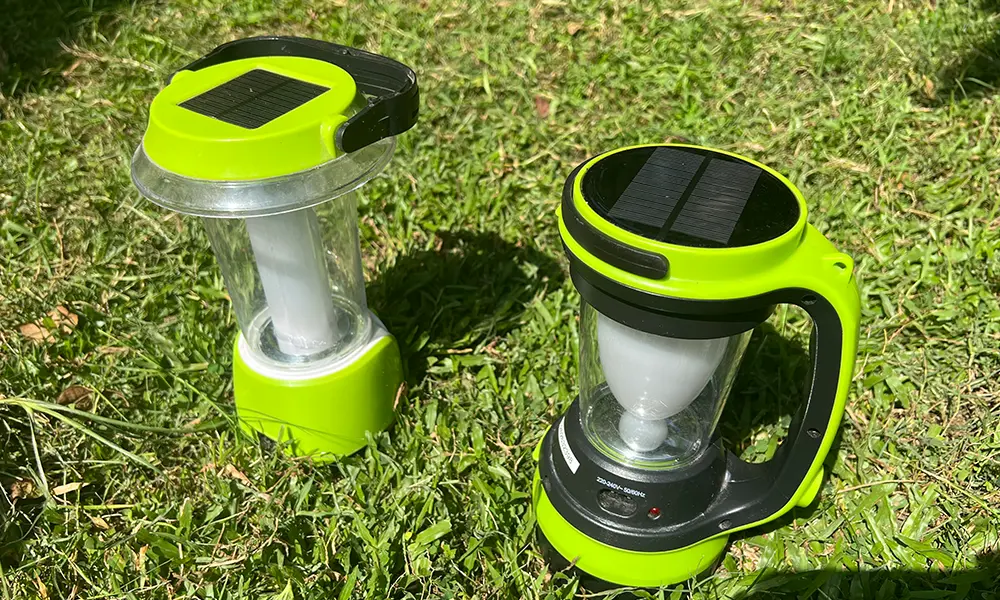
Similarly, I added these two portable solar lamps to charge under the sunlight as well.
But these lamps are not easy to charge with solar light. Since their solar panels are small the time taken to charge is higher.
Further, these solar lights employ lead-acid batteries. They take a lot of time as well. You can find more details below sections as well.
By the way, you can watch this video to see how these portable solar lights are charging. Their charge indicator is lighting up under sunlight and goes off once I cover the solar panels.
These portable solar lamps took 7-8 hours to charge to a considerable amount of light intensity.
Same way, I recorded the time took to charge my wall-mount motion-activated solar lamp charging time as well. They took around 6 hours to fully charge.
You can watch this video to see the light intensity after the charge.
How long do new solar lights take to charge?
You’re a new user of solar lighting systems. You are finding out how long it takes to charge the solar lighting system.
The photovoltaic effect is responsible for solar lighting systems. Due to this, maximum sunlight hours are necessary to recharge solar lights in your lighting system.

Experts say new solar lighting can recharge using direct sunlight within 4 to 6 hours.
However, it is recommended, you should charge the batteries for at least 8 hours under direct sunlight to improve their capacity.
Remember to do that before using them for the first time.
Now you know how long it takes for your solar lights to charge. Let’s examine what factors can affect your solar lights’ charging time.
How to Charge Solar Lights for the First Time?
Charging solar lights for the first time is a simple process.
All you need to do is place the lights in an area with direct sunlight and allow them to charge for the recommended amount of time.
By the way, you have to turn ON the solar lamp switch if there is one with it.
You can follow these steps to charge your solar lights for the first time:
- Place the solar lights in an area with direct sunlight: Solar lights need to be placed in an area where they will receive direct sunlight in order to charge effectively. This may be on a near windowsill, on a tabletop, or in a garden bed.
- Then allow the solar lights to charge for the recommended amount of time: Generally, solar lights should be allowed to charge for at least 6-8 hours for the first time.
- Test the solar lights to ensure they are working properly: Once the solar lights have charged for the recommended amount of time, you can turn them on and test the light brightness.
- Continue to charge the solar lights as needed: Solar lights will typically need to be charged regularly in order to continue functioning properly.
What factors affect the solar lights charging time?
1. Type of the battery in solar lighting system
The Lead acid battery has an assumed 85 % efficiency and is not efficient in electricity storage.
But in contrast, Lithium Ion (Li-ion) batteries have a higher efficiency rate, such as 99 % charging efficiency. And it also has minor discharge loss.
The Lithium Iron Phosphate (LiFePO4) battery recorded an average efficiency rate of 92%.

The traditional solar street lighting systems worked with lead acid batteries, but nowadays, novel lighting systems are facilitated with lithium-ion or LiFePO4 batteries.
So depending on these battery types, the charging time will differ.
2. Number of batteries in your solar lights
The charging efficiency will affect the number of batteries included in the solar lights.
Your solar lights take too much time to recharge, meaning they could have more than one battery inside them.
Usually, this happens to large-scale solar lights.
Because the more batteries included need to charge each of them individually, a higher number of batteries means higher efficiency and a higher charging time in solar lights.
3. The type of the solar panel
The panel type is another consideration for improving the charging rate of your solar lights.
Typically, major 3 categories of solar panels are available in the market: monocrystalline, polycrystalline, and thin-film solar panels.

According to that, monocrystalline panels have higher efficiency and give you a higher battery charging rate rather than polycrystalline panels.
However, they do cost higher than the others.
So polycrystalline panels can be seen in many common low-cost solar lights.
But the efficiency is limited hence it takes a longer time to charge the solar lights.
4. The size of the solar panel
The larger panel size can absorb a high amount of solar radiation and generate higher electrical power.
That means the larger solar panel can faster recharge your solar lights more than smaller solar panels.

5. Orientation of your solar panel
The other factor that can affect the charging rate of solar light is the intensity of sunlight strike on the solar panel surface. Otherwise, the sitting and tilt angle of the panel affect its charging speed.
That means if your solar panel is located in a shady place, it will not absorb maximum sunlight for power generation and will take a long time to recharge the batteries.
Your solar panel should be installed south facing can trap more sunlight during the daytime. And also, the tilt angle should be varied from season to season.

6. Weather conditions
Weather is also another primary consideration you want to take into account in installing your solar panel as well as solar lights.
Because the cloudy or rain weather in your area will reduce the power generation from your solar panel and take too much time to recharge the batteries in solar lights.

For that, always ensure before installing your solar lights that you can obtain maximum solar radiation for maximum recharge efficiency.
Some solar lights are specially designed to work with cloudy or rainy weather. But some of them are not compatible with these harsh weather conditions.

Eng. Matthew Joseph Nandirio is the Founder of walkingsolar.
After graduating from the University of Houston in 2002, matt started working as a Solar Electrical Engineer for several multi-national solar energy companies.
He has a wide range of experiences including solar system requirement analysis, planning, maintaining, debugging and even solar device development through research.
He now shares his 20 years of expertise through his articles on the walkingsolar website.
Further, he is also the author of two books on Solar Technology, “Solar Power for Villages” and “DIY Solar System for Dummies”.

